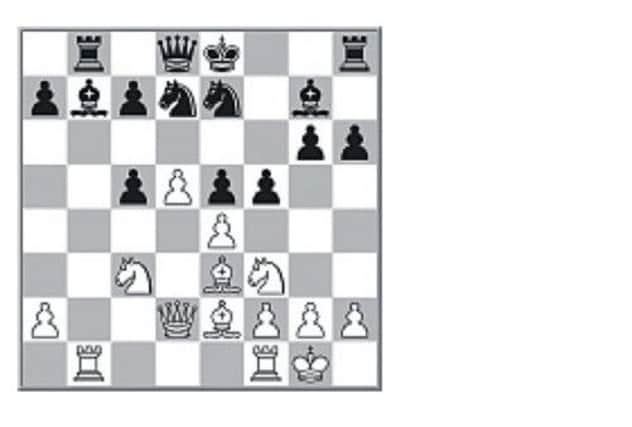Chess - The Scotsman 04/07/13


Most of the early pioneering work on “the Hippo” was done by Slovakian International Master Maximilian Ujtelky in the 1950s and 60s – but it only became “respectable” overnight at top level, as Boris Spassky stunned the chess world by deploying it twice against Tigran Petrosian during their 1966 world championship match in Moscow.
One of today’s best hypermodern players is Sweden’s Tiger Hillarp Persson. And writing in his book, Tiger’s Modern, he describes it thus: “[T]he Hippo lies low in the water. It looks almost ridiculously passive and many theoreticians consider the Hippo to be a peaceful, almost meek animal. But nothing could be further from the truth. On closer scrutiny the animal, the position, and the statistics look almost entirely different. The Hippo is a fierce animal; ready to crush anyone who gets too close.”
Advertisement
Hide AdAdvertisement
Hide AdBut recent research by The World Conservation Union has placed Hippos on the endangered species list – and it could well be the same over the chessboard, as former World champion Vladimir Kramnik ruthlessly hunts one down during his Geneva Masters semifinal blitz decider against Hikaru Nakamura.
N V Kramnik - H Nakamura
1st Geneva Masters KO
Hippopotamus Defence
Mo 1 c4 b6 2 Nf3 Bb7 3 Nc3 e6 4 e4 g6 5 d4 Bg7 6 Be2 Ne7 7 0–0 d6 8 Be3 Nd7 9 Qd2 h6 10 d5 e5 11 b4 f5 12 c5 bxc5 13 bxc5 dxc5 14 Rab1 Rb8 15 Bb5! 0–0 16 d6 cxd6 17 Qxd6 Nb6 18 Bxc5 Bf6 19 Nxe5 Qxd6 20 Bxd6 Kg7 21 exf5 Rbc8 22 Bxe7 Bxe7 23 Nxg6 Rxc3 24 Nxe7 Kf6 25 Rfe1 Rd8 26 a4 Ra3 27 Re6+ Kf7 28 Rbe1 Nxa4 29 Rxh6 Be4 30 Bc4+ Kxe7 31 Rxe4+ Kd7 32 Rd4+ Kc7 33 Rh7+ 1–0